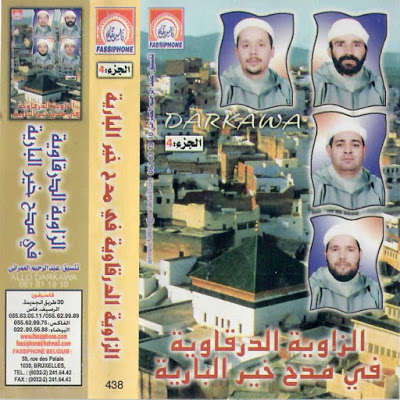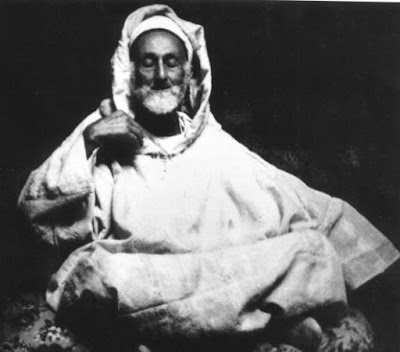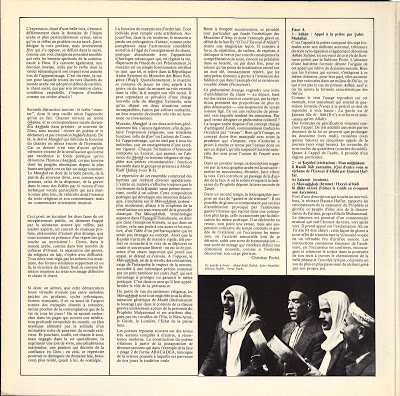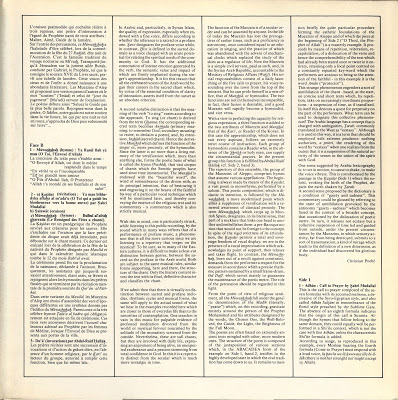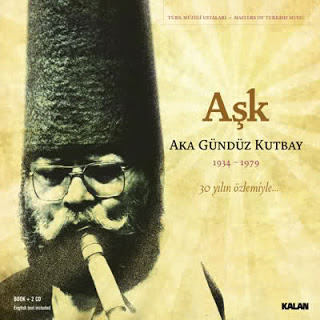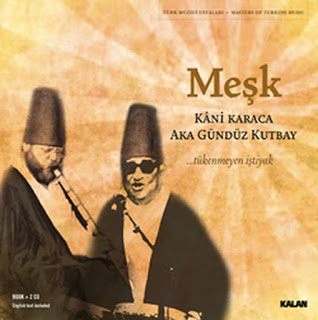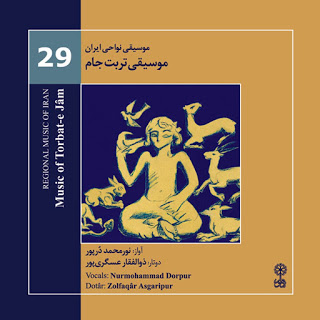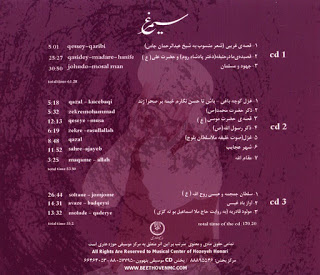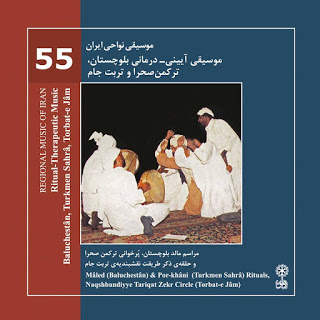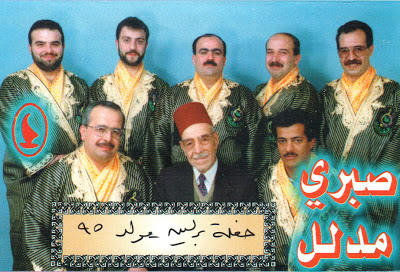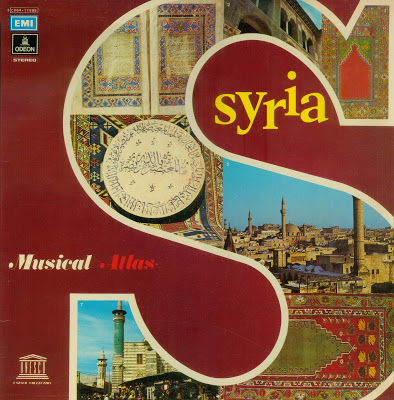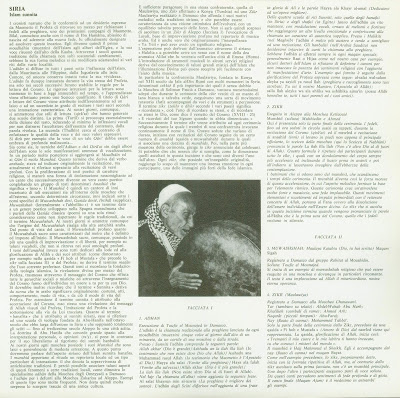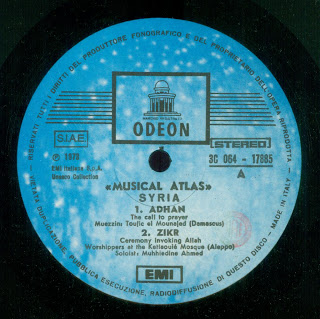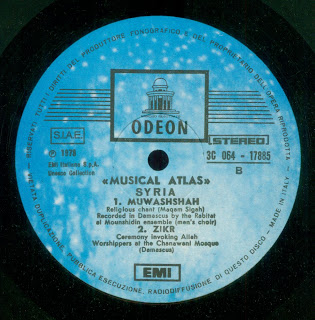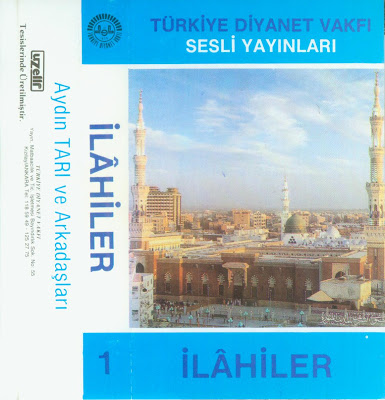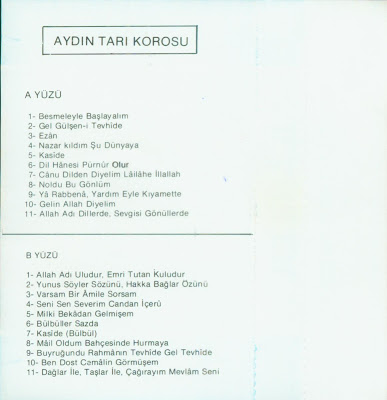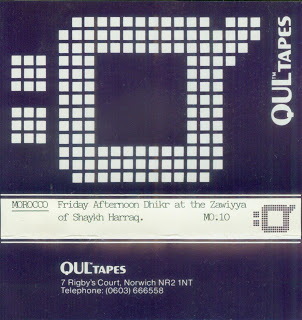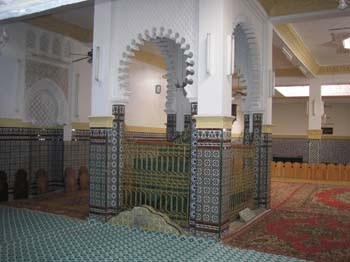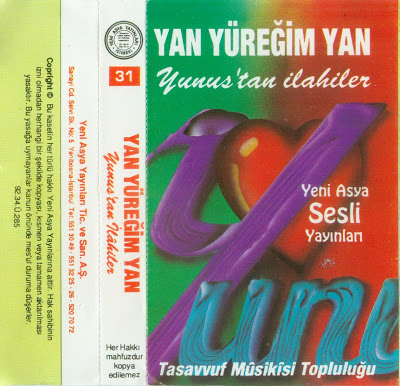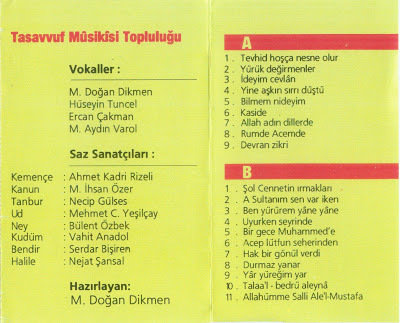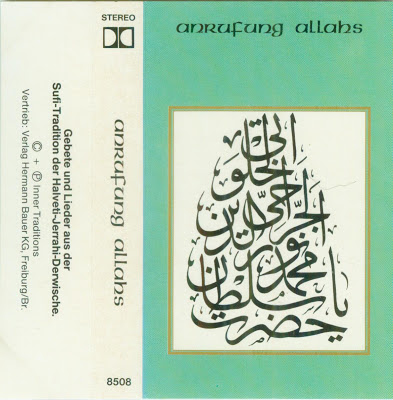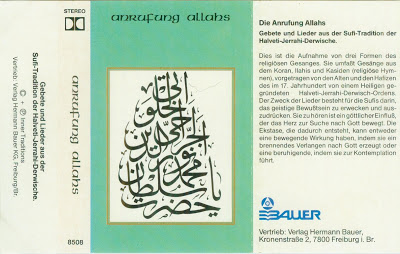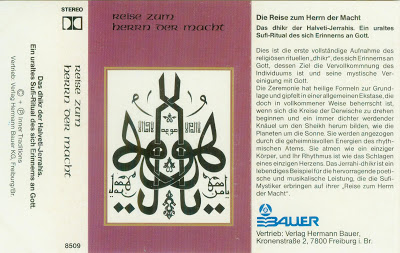Beautiful cassette by the great munshid from Damascus, Syria

Sheikh Hamza Shakkur: Syrian master of mystical song
by Suleman
Taufiq
24 February 2009
Bonn, Germany - Sheikh Hamza
Shakkur, a well-known interpreter of traditional Arab music, died in Damascus on
4 February 2009 at the age of 65.
The way in which Sheikh Hamza Shakkur
could lull his listeners into a trance-like state by grace of his singing alone
had to be seen to be believed. He possessed not only vocal talent, but also a
powerful, sonorous and all-embracing voice capable of playing counterpart to an
orchestra and filling an entire room.
His musical intuition was borne of
a spiritual power that drew listeners into the mystical tradition of Sufism. His
bass voice with its richly rounded timbre made him one of the most famous
singers in the Arab world.
Shakkur was born in Damascus in 1944. At an
early age he received a thorough training in Qur’anic recitation according to
the Syrian tradition. His father was the muezzin at the local mosque who taught
Shakkur the basics of spiritual recitation. At the age of ten, Shakkur assumed
this role, thereby becoming his father’s successor.
Although he never
learned to read music, he built up a repertoire comprising thousands of songs by
learning lyrics and melodies by heart.
Among the mystics of the Sufi
community he began studying the hymns of mystical love, a form of expression
that is still highly respected in Arab society. Having studied the entire
spiritual repertoire of Islam he was in much demand as a singer. He also made
numerous recordings for the radio.
Later he became choirmaster of the
Munshiddin (a group of individuals who recite the Qu’ran) at the Great Mosque of
Damascus and performed at official religious ceremonies there, which made him
immensely popular in Syria. The Great Mosque in Damascus is one of the most
sacred sites in Islam.
Shakkur belonged to the traditional Damascus
school of music. He felt a close bond with the Mevlevi Order, the community of
“whirling dervishes”, and strove to preserve the continuity of their repertoire.
This community is known for its whirling dance ritual, the epitome of Eastern
mysticism. Dressed in wide swinging, bell-shaped white skirts and camel-coloured
felt hats, they whirl to classical music and chanting.
Sufis believe that
life is an eternal circular motion out of which everything arises and in which
everything exists and passes. Their ritual dance symbolises the spiritual source
of Sufi mysticism. If the dancer goes into a trance, he experiences himself as
suspended in God’s love, as part of this eternal divine movement.
This
mystical brotherhood met in lodges, and preserved the original songs, which were
divided into suites, modes and rhythms.
The Great Umayyad Mosque in
Damascus has its own specific vocal repertoire in which sacred suites are known
as nawbat, a term originally used for secular songs that were written in Arab
Andalusia and became known there as muwashahat.
Reciters such as Shakkur,
typically accompanied by a choir, took from the repertoire of the mosque the
mention of God’s 99 divine names and the birth of the Prophet Muhammad and
chanted them in a powerfully expressive manner, rigorously mobilising rhythm to
support their songs. In this way, he succeeded in gradually putting gathered
listeners into a trance or a state of meditation.
In 1983 Shakkur and
French musician Julien Weiss founded the Al Kindi ensemble, through which he
succeeded in introducing this music to Europe and America.
The ensemble
specialised in music from Arab-Andalusia and its repertoire covered both
religious and secular themes. Its interpretations were heavily steeped in
tradition. Weiss created an Arab musical ensemble with the Arab lute, oud, ney,
kanun and a variety of rhythm instruments.
Shakkur selected songs with
very diverse rhythms and melodies that impressively demonstrated his musical
phrasing and improvisational talent. Particular emphasis was placed on
preserving the unity of the sequence of songs and their musical mode as well as
on playing songs in the traditional manner.
Shakkur was a religious man
and had a religious title. Nevertheless he sang not only religious but also
secular songs. He followed the tradition of the Sufi community for whom music is
an integral part of religious ceremonies and the medium through which the human
soul comes closer to the divine.
Shakkur preferred the vocal
improvisation of Arabic music. He mastered the art of Arab emotional singing
like few others and understood how to adjust intuitively to the emotions of each
audience in order to captivate and enthral it.
Source: Qantara.de, 17
February 2009, www.qantara.de
from:
http://www.commongroundnews.org/article.php?id=24910&lan=en&sp=0
Sheikh Hamza Shakkur Talks About Sufi Music
By Sami Asmar
Sheikh Hamza
Shakkur's voice emanates spiritual power that draws listeners into the mystical
tradition of Sufism. Born in Damascus in 1947, Sheikh Shakkur is a quranic
reader and hymnist. He is also the choirmaster of the Munshiddin (reciters) of
the Great Mosque in Damascus and serves at official religious ceremonies in
Syria, where he is immensely popular. His bass voice with its richly rounded
timbre has made him one of the foremost Arab vocalists. Shakkur is the disciple
of Said Farhat and Tawfiq al-Munajjid and feels the responsibility to assure the
continuity of the repertoire in the Mawlawiyya (Mevlevi in Turkish)
order.
Damascus was the capital of the Ummayyad dynasty and a principal stage
in the pilgrimage to Mecca. The Sufi mystical brotherhood known as Mawlawiyya
met in places known as zawiya and adopted the original chants grouped in suites
(waslat) in particular modes (maqamat) and rhythms (iqaat). The Great Ummayyad
Mosque of Damascus possesses a specific vocal repertoire, where sacred suites
are known as a nawbat, a term originally used for the secular songs developed in
Arab Andalusia known as muwashshat. Typically accompanied by a choir, a vocalist
such as Sheikh Hamza Shakkur extracts from the repertoire of the mosque the
naming of God (dhikr) and the birth of the prophet (mawlid) in a serene
expression that has a rigorously organized rhythm. Thus the vocalist
progressively leads the assembly into a trance or a state of meditation
(ta'ammul).
In the early ninth century, when the Muslim mystics organized
their Sufi brotherhoods, they adopted music for their meditation as a way of
reaching the state of ecstasy, a source of new vigor to the body and soul. In
Sufism,sama' denotes the tradition of listening in a spiritual fashion to music
of all forms. This suggests that the act of listening is spiritual, without the
music or poetry being necessarily religious in content. The major preoccupation
of the mystics was to give the ecstasy real content and the music true
meaning.
The Mawlawiyya order was founded in Konya, Anatolia, by the Persian
poet Jalal al-Din al-Rumi (1207-1273). Although the ritual is primarily
associated with Turkey, local traditions have existed in Syria, Egypt, and Iraq
since the 16th century. The Mawlawiyya of Damascus are very few and have been
threatened with closure on many occasions. The personal prestige of Sheikh Hamza
Shakkur has rescued them, for he has reached celebrity status that has allowed
him to generate support for the small group.
We met with the Sheikh, who
led the Whirling Dervishes of Damascus in a great concert in Los Angeles,
accompanied by al-Kindi Ensemble.
Asmar: How do you describe Sufism to
Westerners?
Shakkur: This is a very difficult question but nothing is too
difficult for a Sufi. Tassauf is only for those with convictions about the
belief in God and his prophet. Trust in God must be blind. When encountering
Westerners who may not have reached the spiritual level required for full
understanding, there are seven languages that the Sufi can use to communicate
with them. The Sufi practitioner needs to be advanced and highly capable in
order to communicate via these seven languages. First is the Arabic tongue, the
language of the Quran, which is universally appreciated as a beautiful language.
Second is the language of music, which is also universal, needless to say. Third
is the language of the eyes; the eye is the window to the soul. Fourth is
language of silence; this is an important one for a hymnist, reader or musician,
for the appropriate length rest at the appropriate time is part of the
communication scheme. The language of silence is also manifested in the saying
that silence is the sign of agreement. For example, in an old tradition, when a
man proposes marriage to a woman, her silence is taken as an acceptance. Fifth
is the expression of feelings. Sixth is physical expressions (taabir) or body
language. Seventh is the language of the soul, as Islam is as much a spiritual
religion as it is practical. The key to all these is that they have to come from
the heart, truly, or else the communication fails.
Asmar: What does the
whirling of the Mawlawiyya signify?
Shakkur: It is important to note that the
Mawlawiyya is only one of the expressions of Sufism, not its only
representation. In the Dhikr of God, one can be moved to stand, sit, lean,
whirl, rotate the neck, become silent or whatever other physical expression
comes as a first reaction. The whirling of the Mawlawiyya is inspired by the
rotation of the Earth and cycle of blood circulation in the body. Circular
motion has great significance in the wisdom of the creator.
Asmar: What
distinguishes the Ummayyad mosque from other mosques?
Shakkur: The Mosque of
Bani Ummayya has very distinctive hymns and melodies, even the call to prayer
(azan). Historically speaking, Salaheddine al-Ayyubi, several centuries ago,
encouraged the people to sing specific chants in this mosque as he prepared them
to battle the crusaders, and that started a long tradition of wonderful hymns in
the form of nawbat. But this was not formally organized until the scholar Sheikh
Abd al-Ghani al-Nabulsi who, inspired by al-Ayyubi, built on the tradition using
his own amazing spirituality and added lyrics and tunes and eventually set up
guidelines for the repertoire of the Ummayyad Mosque. He also introduced musical
instruments. Before him, they only used drums.
Asmar: Are instruments allowed
inside the Mosque?
Shakkur: No, not inside the mosque, but in the courtyard
and the Mawlawiyya zawiya.
Asmar: What was the accepted use of these
instruments?
Shakkur: Sheikh al-Nabulsi wrote a book on the proper use of
music in our tradition called "Al-Dalalat Fi Sama' Al-Alat" (The Signs of
Listening to Instruments). He stressed that musical instruments have good uses
to praise God and express spirituality and bad uses as a tool of seduction or
material gain. He also composed two calls to prayer (azan) that are different
from the standard ones you hear elsewhere. He created a group azan in which a
soloist calls Allah Akbar (God is Great) and a choir repeats after him in a
special melody. He is also credited for a different tune for the so-called Azan
al-Imsak, which is the call to prayer 10 minutes before the sunrise azan. We
also chant the azan in the maqamat siqah and Bayyati as well as the standard
Hijaz and Rast maqamat known throughout the Islamic world. Damascus is unique in
having options for four maqamat for the azan.
Asmar: Are you also saying
there are extra azan (calls to prayer) beyond the standard times?
Shakkur: We
have tarahim, special prayers between azans. Also every tower (maazanah) in the
mosque has its own version of the azan. It is quite a sophisticated
arrangement.
Asmar: What is the relationship between the Andalusian Arab
heritage and the repertoire of the Ummayad Mosque?
Shakkur: There is a clear
link between the two. Many traditions were carried back to Damascus through
North Africa where they prospered more in the Mosque community than elsewhere.
We even use the same terminology, such as nawba, that you still hear in North
African classical music of muwashshat. What has developed in the repertoire of
the Ummayad Mosque, however, is unique and clearly distinct from the Andalucian
or North African traditions despite the historical connections.
This article
appeared in Vol. 7, no. 36 (Summer 2001).
from:
http://www.aljadid.com/content/sheikh-hamza-shakkur-talks-about-sufi-music-0
